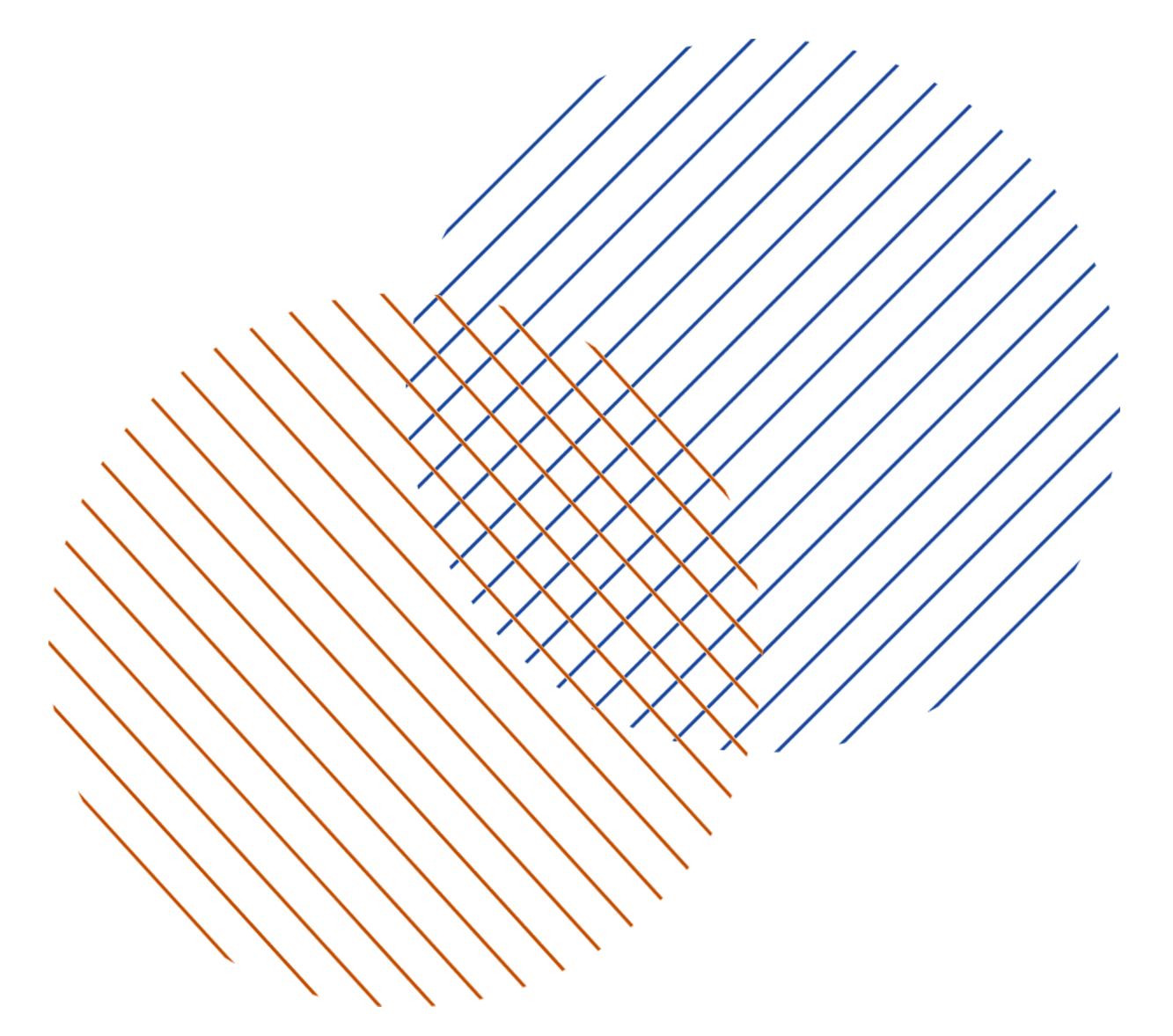
Paul Adigun
Research Student, University of Tsukuba
Paul Adigun received a Bachelors Degree in Meteorology and Climate Science from Federal University of Technology Akure in 2018. Paul is a MEXT scholar, currently pursuing a master’s degree in systems and information engineering with a major in environmental fluid engineering at University of Tsukuba Japan. His current research focus on aerosols roles to precipitation variability in East Asia.
Poster Presentation Title: Quantifying the role of aerosol to precipitation variability in East Asia through aerosols to cloud interactions
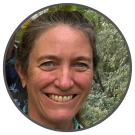
Elisabeth (Betsy) Andrews
Research Scientist, University of Colorado, CIRES and NOAA
Betsy Andrews is a research scientist at the University of Colorado at the Cooperative Institute for Research in Environmental Sciences (CIRES) working in NOAA/Global Monitoring Lab's Aerosol Group. She helps manage the NOAA Federated Aerosol Network (NFAN) which measures surface in-situ aerosol optical properties around the globe. When she's not visiting NFAN sites for maintenance and training she is working with collaborators on data analysis related to co-variability of aerosol properties, aerosol hygroscopicity, and using in-situ measurements for global model evaluation.
Presentation Title: Effect of hygroscopic growth on aerosol light scattering - observed climatology and model evaluation

Susan Anenberg - Keynote Speaker
Associate Professor, George Washington University
Susan Anenberg is an Associate Professor of Environmental and Occupational Health and of Global Health at the George Washington University Milken Institute School of Public Health. Dr. Anenberg studies the health implications of air pollution and climate change, from local to global scales. Dr. Anenberg has been a Co-Founder and Partner at Environmental Health Analytics, LLC, the Deputy Managing Director for Recommendations at the U.S. Chemical Safety Board, an environmental scientist at the U.S. Environmental Protection Agency, and a senior advisor for clean cookstove initiatives at the U.S. State Department. Her research has been published in top academic journals such as Science, Nature, and Lancet Planetary Health. She has also led or contributed to many science-policy reports on air quality and climate change published by U.S. EPA, World Bank, World Health Organization, United Nations Environment Programme, and others.
Keynote Presentation Title: Climate change, air pollution, and public health: Past, present, and future

Cedrick Ansorge
Research Group Leader, Universität zu Köln
Cedrick Ansorge works on turbulence in the boundary layer, focusing on situations where the flow deviates from classical similarity theory due to strong stratification, heterogeneity, de-coupling from the surface or other processes. He uses turbulence-resolving modelling to advance the understanding in these regimes. Ansorge graduated from University of Hamburg and did his PhD at the Max-Planck-Institute for Meteorology in Hamburg and Hamburg University. Since 2015 he is affiliated with the University of Cologne. He was awarded a 2020 ERC Starting Grant to investigate the intermittency of turbulence.
Presentation Title: Towards Modelling Turbulence Intermittency in Atmospheric Flow

Joaquim Arteta
Scientist, Météo-France / CNRM
Scientist at Météo-France since 2009, Joaquim Arteta has worked on the operational implementation of Air Quality forecasts at the European scale through the GEMS, MACC and CAMS projects. Joaquim's research interests include the chemical interactions between the surface and the lower layers of the atmosphere.
Presentation Title: Overview of operational air quality forecasting systems in France and Europe

Robert Arthur
Staff Scientist, Lawrence Livermore National Laboratory
Robert (Bobby) Arthur is a staff scientist in the Atmospheric, Earth, & Energy Division at Lawrence Livermore National Laboratory, where he focuses on atmospheric boundary layer modeling for wind energy applications. Prior to joining LLNL as a postdoc in 2017, Bobby received a PhD in Civil & Environmental Engineering from Stanford, where he studied coastal oceanography. Bobby also had a brief postdoctoral stint at UC Berkeley, where he made the jump from ocean to atmospheric modeling.
Presentation Title: Improved Prediction of Cold-Air Pools in the Weather Research and Forecasting Model Using a Truly Horizontal Diffusion Scheme
Akarsh Aurora
Student, Ashland High School, MA
Akarsh Aurora is a high school student researching the ability of MOS sensors to color in the gaps in local air pollution monitoring through nonprofit Environa Environmental and the MassDEP. Akarsh's interests also include researching particulate flows in concentrated solar-thermal power.
Presentation Title: Utilizing MOS-based Gas Sensors with Algorithmic Temperature Fluctuation Correction for Local Ambient Pollutant Monitoring

Elizabeth (Libby) Barnes
Associate Professor, Colorado State University
Dr. Elizabeth (Libby) Barnes is an associate professor of Atmospheric Science at Colorado State University. She joined the CSU faculty in 2013 after obtaining dual B.S. degrees (Honors) in Physics and Mathematics from the University of Minnesota, obtaining her Ph.D. in Atmospheric Science from the University of Washington, and spending a year as a NOAA Climate & Global Change Fellow at the Lamont-Doherty Earth Observatory. Professor Barnes' research is largely focused on climate variability and change and the data analysis tools used to understand it. Topics of interest include earth system predictability, jet-stream dynamics, Arctic-midlatitude connections, subseasonal-to-decadal (S2D) prediction, and data science methods for earth system research (e.g. machine learning, causal discovery). She teaches graduate courses on fundamental atmospheric dynamics and data science and statistical analysis methods. Professor Barnes is involved in a number of research community activities. In addition to being a lead of the new US CLIVAR Working Group: Emerging Data Science Tools for Climate Variability and Predictability, a funded member of the NSF AI Institute for Research on Trustworthy AI in Weather, Climate and Coastal Oceanography (AI2ES), and on the Steering Committee of the CSU Data Science Research Institute, she recently finished being the lead of the NOAA MAPP S2S Prediction Task Force (2016-2020).
Dr. Barnes received the AGU Turco Lectureship for 2020, AMS Clarence Leroy Meisinger Award for 2020, and was awarded an NSF CAREER grant in 2018. She received the George T. Abell Outstanding Early-Career Faculty Award in 2016 and was recognized for her teaching and mentoring by being awarded an Honorable Mention for the CSU Graduate Advising and Mentorship Award in 2017 and being named the Outstanding Professor of the Year Award in 2016 by the graduate students of the Department of Atmospheric Science. In 2014 she was the recipient of an AGU James R. Holton Junior Scientist Award.
Presentation Title: Explainable AI for the Geosciences
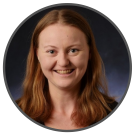
Megan Bela
Research Scientist, Cooperative Institute for Research in Environmental Sciences (CIRES) University of Colorado / NOAA Chemical Sciences Laboratory (CSL)
Dr. Bela's research focuses on improving process-level understanding and model representations of fire emissions, plume rise, and chemistry, with the aim of developing a better capability to predict air quality and weather in fire-affected regions.
Presentation Title: Using observations of Western U.S. wildfire smoke to improve fire emissions in air quality forecasting models

Jianzhao Bi
Postdoc, University of Washington
PhD at Emory University, US; Master in Science at Tsinghua University, China
Presentation Title: Openly accessible low-cost measurements for PM2.5 exposure modeling: guidance for monitor deployment with a similarity metric

Enzo Le Bouëdec
PhD student, Université de Grenoble Alpes / LEGI
Enzo Le Bouëdec is currently a third year PhD student at the LEGI under the supervision of Professor C. Staquet. The objective of their thesis is to study whether a weather-type approach can be relevant to study the atmospheric dynamics in the Grenoble valley, and in particular when focusing on the resulting particulate matter's dispersion.
Poster Presentation Title: Does a representative dynamics exist for the Grenoble valley during winter anticyclonic episodes?

Long Bui
Associate Professor, Viet Nam National University Ho Chi Minh City (VNU-HCM)
After receiving PhD degree of Moscow State University since 1989 in the field of functional methods to stability problems I had worked in the Viet Nam Academy of Sciences and Technology with scientific researches in this field and in vibration problem of pipelines with flowing fluid. I had payed attention on the environmental modeling in the 1995 with researches of system of survey and simulation for air pollution. In 1998 I had received Degree Doctor of Sciences on the topics: Automation of data processing in geophysical systems of monitoring on the territory of Vietnam. I continued pay attention of environmental modeling and building of integrated systems for supporting management and DSS. I’m program manager of many research projects in different regions of Vietnam.
Presentation Title: SEASONAL VARIATION ANALYSIS OF GROUND LEVEL OZONE IN THE MEKONG DELTA BY USING THE COUPLED WRF/CMAQ MODEL
Marc Calaf
Associate Professor, Department of Mechanical Engineering, University of Utah
Marc Calaf is an Associate Professor at the Department of Mechanical Engineering at the University of Utah. He received a PhD in ME from École Polythecnique Fédérale de Lausanne (EPFL) in 2011, after spending two years as a visiting student at Johns Hopkins University. In 2019-20 he was a visiting faculty at the Karlsruhe Institute of Technology (KIT) Campus Alpine, in Garmisch-Partenkirchen as a Humboldt Scholar. His research interests include the study of atmospheric boundary-layer (ABL) flows, turbulence, and renewable energy systems that interact with the ABL, together with their corresponding representation in computational platforms.
Session Title: Turbulence Resolved and Fine Scale Processes

Patrick Campbell
Research Assistant Professor, George Mason University/NOAA-Air Resources Affiliate
Dr. Patrick C. Campbell is a research assistant professor at George Mason University at the Center for Spatial Information Science and Systems, and a NOAA Air Resources Laboratory (ARL) Affiliate under the Cooperative Institute for Satellite Earth System Studies (CISESS). Dr. Campbell completed his PhD research work in 2013 at the University of Wyoming, where he studied observational and modeling research on stratospheric aerosol formation and climate. Later, Dr. Campbell moved on to his Postdoctoral work at North Carolina State University and then the U.S. Environmental Protection Agency, where his main focus of research was on meteorological, chemistry, and air-surface exchange model development and application as it relates to atmospheric composition, climate, and air quality impacts. Currently, Dr. Campbell is working closely with the NOAA-ARL Chemical Modeling and Emissions Group on research and development on atmospheric composition, emissions, and air-surface exchange processes. Ultimately, his work helps improve NOAA's weather and air quality forecasting models, which protects human and ecosystems health.
Presentation Title: An Improved National Air Quality Forecasting Capability Using the NOAA Global Forecast System. Part I: Model Development and Community Application
Gregory Carmichael
Professor, University of Iowa
Gregory Carmichael is the Karl Kammermeyer Professor of Chemical & Biochemical Engineering at the University of Iowa and Co-director of the Center for Global and Regional Environmental Research. His research program is focused on air pollution and climate change. He uses comprehensive computer models and big data to simulate the interactions of air pollutants with weather and climate and to estimate resulting environmental impacts. His models are used to evaluate effectiveness of various air pollution and climate change mitigation strategies. His work has explored the importance of dust on atmospheric chemistry, and the development of innovative modeling tools, including techniques to optimally integrate measurements and models via formal chemical data assimilation. He has helped establish air quality forecasting as a critical element as important operational services for public health protection. Most recently his work has focused on the role of black carbon in the atmosphere. He is a Fellow of the American Institute of Chemical Engineers and a Fellow of the American Geophysical Union. He serves on numerous international advisory boards related to climate change and atmospheric sciences including NASA’s Earth System Subcommittee, co-chair of the scientific community cohort committee of the NASA Aerosol and Convection, Clouds and Precipitation satellite study, and chair of the Environmental Pollution and Atmospheric Chemistry Scientific Steering Committee of the UN WMO.
Presentation Title: Advancing Aerosol Modeling across Air Quality, Weather and Climate Applications

Ken Carslaw
Professor, University of Leeds
Ken is a professor of atmospheric science at the university of Leeds. He is the developer of the aerosol component of the UK climate model and has published over 200 papers on a wide range of aerosol-climate topics including aerosol-cloud interaction, new particle formation, natural aerosols, volcanic impacts, health effects and uncertainty quantification.
Presentation Title: Can we reduce the persistent uncertainty in aerosol effects on climate?

Shu-Hua Chen
Professor, University of California Davis
Shu-Hua Chen is a Professor in the Department of Land Air and Water Resources at University of California, Davis. Dr. Chen received her B.S. degree in Atmospheric Science from National Taiwan University in Taiwan, and her M.S. and Ph.D. degrees in Atmospheric Science from Purdue University, IN. Her major research interests include aerosol-cloud-radiation interactions, dust and weather, severe weather, long-range pollutant transport, heavy orographic rainfall, data assimilation, hurricanes, and regional climate change using numerical modeling.
Presentation Title: Impacts of Saharan mineral dust on air‐sea interaction and coastal cloud activities over the Eastern North Atlantic Ocean using a fully coupled regional model

Megan Christiansen
Graduate Research Assistant, University of Iowa
Megan Christiansen is a graduate student in the Department of Chemical and Biochemical Engineering at the University of Iowa. Megan has a Bachelor’s degree in Chemistry and Applied Mathematics from Weber State University (Utah). Their research has focused on understanding the formation and transport of ozone and fine particulate matter during poor air quality episodes in coastal environments in spring and summer. Megan was on site at one of the ground stations and a part of the UIowa air quality forecasting team during the LMOS 2017 field campaign. Recently, Megan's focus has expanded to creating highly-resolved spatial air quality maps in areas with limited surface observations, such as Vietnam.
Presentation Title: WRF-Chem modeling of PM2.5 and AOD of Summertime Air Quality around Lake Michigan

Stephanie Elizabeth Cleland
PhD Student, Department of Environmental Sciences & Engineering, Gillings School of Global Public Health, University of North Carolina at Chapel Hill
Stephanie is a PhD student at UNC-Chapel Hill in the Department of Environmental Sciences & Engineering. As an ORISE research participant at EPA’s Center for Public Health and Environmental Assessment, her current research focuses on understanding the impacts of wildfires on air quality and human health. She develops exposure surfaces and uses environmental epidemiology and health impact assessments to evaluate the acute and chronic health effects of wildfire smoke exposure.
Presentation Title: Fusing Observed, Modeled, and Satellite-Derived Concentrations to Produce Fine-Resolution Estimates of Ground-Level PM2.5 During the 2017 California Wildfires

Lambert Delbeke
Phd Student, LAERO
Lambert Delbeke is a Phd Student from LAERO working on the aerosol impact on the environment and climate over Africa. Their current work is focused on the aerosol role in the diurnal cycle of Southern West Africa stratocumulus during the DACCIWA campaign.
Presentation Title: Influence of Different Atmospheric Aerosol Compositions on the Life Cycle of Stratocumulus Clouds over Southern West Africa

Jerome Fast
Laboratory Fellow, Pacific Northwest National Laboratory
Dr. Fast obtained a Ph.D. in Meteorology from Iowa State University in 1990, has been a research scientist at Pacific Northwest National Laboratory since 1994, and became a National Center for Atmospheric Research (NCAR) affiliate scientist in the Atmospheric Chemistry Observations and Modeling (ACOM) laboratory in 2009. He is currently principal investigator of the Integrated Cloud, Land-surface, and Aerosol System Study (ICLASS) science focus area supported by the U.S. Department of Energy’s (DOE) Atmospheric System Research (ASR) program that consists of ~30 scientists. Dr. Fast’s research interests and experience encompasses a wide range of atmospheric phenomena including: transport and dispersion processes, complex terrain circulations, boundary layer meteorology, mesoscale systems, trace gas and particulate chemistry, and aerosol-radiation-cloud interactions. He is an expert in developing, using, and interpreting atmospheric models to address key outstanding science questions associated with these atmospheric phenomena that are important for weather forecasting, air quality, and climate. While Dr. Fast is primarily a modeler, he has led and/or contributed to eight field campaigns since 1997, some of which had many participants from multiple agencies laboratories, and universities.
Presentation Title: The Challenges of Modeling Wintertime Particulate Matter Within Basins

Gonzalo Ferrada
Ph.D. candidate and Research Assistant, Center for Global and Regional Environmental Research
Gonzalo has a Bachelor's degree in Meteorology from the University of Valparaiso (Chile) and a Master's degree also in Meteorology from the National Institute for Space Research (Brazil). Currently, he’s a Ph.D. candidate at the University of Iowa. Gonzalo's research focus is improving the representation of fires and smoke in atmospheric models by developing an emission inventory and enhancing the plume rise treatment to better estimate the smoke injection height. Gonzalo has been in field participating in NASA's ORACLES (Southern Africa, 2016-18) and NOAA's FIREX-AQ (USA, 2019) campaigns.
Presentation Title: Generating an open biomass burning emission inventory using fire radiative power from VIIRS

Johannes Flemming
Principal Scientist, ECMWF
Johannes Flemming is a Principal Scientist in the development section of the Copernicus Atmosphere Monitoring Service (CAMS) at ECMWF. Johannes's role is to coordinate the development of components on atmospheric composition in the Integrated Forecasting System (IFS) that are used for CAMS. Johannes is also responsible for the transition of the CAMS developments to their application in the operational CAMS Near-Real-Time forecasting system. Johannes leads the scientific steering committee of the WMO-GAW initiative on Global Air-Quality-Forecasting and Information Systems. (GAFIS)
Johannes studied meteorology in Berlin and completed his doctoral thesis on the topic of data assimilation of air quality observations in a regional model. He started working at ECMWF in 2004 working in the HALO, GEMS and series of MACC projects, and since 2015 in CAMS.
Presentation Title: The CAMS global atmospheric composition forecast system: Recent upgrades and impact of prognostic aerosols and ozone on weather forecasts

Marco Giometto
Assistant Professor, Columbia University, Department of Civil Engineering and Engineering Mechanics
Marco Giometto focuses on the fundamentals of turbulence, and its impact on the transport of mass, energy, and momentum in engineering and environmental systems. He received his BS and MS degrees in civil engineering from the University of Padua (2010), and a joint PhD in civil and environmental engineering from Braunschweig TU University and the University of Florence (2014). In 2016 he earned a second PhD in mechanical engineering from École Polytechnique Fédérale de Lausanne, where he won the EDME Award for the best thesis in mechanical engineering. Before joining Columbia University in 2018, he held postdoctoral positions at the University of British Columbia and at the Center for Turbulence Research, which is jointly operated by Stanford University and NASA Ames.
Presentation Title: Quantifying the Impact of Flow Unsteadiness on Momentum and Scalar Transfer in Urban Environments

Lorenzo Giovannini
Assistant Professor, University of Trento, Department of Civil, Environmental and Mechanical Engineering
Lorenzo Giovannini is assistant professor at the Department of Civil, Environmental and Mechanical Engineering of the University of Trento (Italy). His research interests include the study of atmospheric boundary layer processes typical of mountainous regions and the evaluation of microclimatic alterations induced by urban areas, by means of both numerical modeling and experimental campaigns. He is involved in different research projects, focusing on the improvement of meteorological simulations over complex and urban terrain for different applications, such as pollutant dispersion, renewable energy and building energy consumption.
Presentation Title: Measurement and modeling of pollutant dispersion in highly complex terrain: the Bolzano Tracer Experiment (BTEX)

Geneva Gray
PhD Candidate, North Carolina State University
Geneva Gray is a Ph.D. candidate at North Carolina State University. She received her master’s in atmospheric sciences, and two baccalaureate degrees in meteorology and environmental sciences at North Carolina State University. Geneva is a former USGS Global Change Fellow (2015-2016), and former NSF Urban Extremes Fellow (2018-2019). Currently, Geneva is an ORISE fellow at the EPA working on extreme event modeling methods.
Presentation Title: Exploring the pseudo-global warming method to quantify potential changes in extreme meteorological case studies

Steven Hanna
Adjunct Associate Professor, Harvard TH Chan School of Public Health
Dr. Hanna is a specialist in atmospheric turbulence and dispersion, and in the development, evaluation, and application of air quality models. He is currently part of a HSPH study regarding guidance for reducing risk of COVID-19 in indoor environments. For the past ten years, he has been a chief scientific advisor for the DHS and DTRA Jack Rabbit field experiments where 1 to 20 tons of chlorine or anhydrous ammonia are released and concentration patterns observed. In 2020 he was guest editor of a special issue of Atmospheric Environment where 20 papers were published as part of a comprehensive model comparison study.
Presentation Title: Near-Field Modeling of Transport and Dispersion of COVID-19 Virus Indoors and Outdoors

Tai-Long He
PhD student, University of Toronto
Tai-Long is a fifth year PhD student at the University of Toronto. Their research focuses on the development and application of machine learning models for air quality, carbon cycle, and climate studies.
Presentation Title: Deep learning to evaluate US NOx emissions using surface ozone predictions

Daven Henze
Professor, University of Colorado Boulder
Dr. Daven Henze is a Professor and the S. P. Chip and Lori Johnson Faculty Fellow in the Department of Mechanical Engineering at the University of Colorado Boulder, and an Adjunct Senior Research Scientist at the Lamont-Doherty Earth Observatory of Columbia University. He holds a Ph.D. in chemical engineering from Caltech. Prior to joining the faculty at CU Boulder he was an Earth Institute Postdoctoral Fellow at Columbia University, where he worked at the NASA Goddard Institute for Space Studies. Dr. Henze’s research focuses on air quality, long-range pollution transport, and climate change. A large part of his research stems from chemical data assimilation, the process by which both models and observations are combined to produce estimates of the atmospheric state that are often more complete than those provided by either approach alone. This encompasses more specific interests in remote sensing, adjoint sensitivity analysis, inverse problems, and source apportionment. Dr. Henze has received an EPA Early Career award, a NASA New Investigator award, and several university awards for teaching and research. He is the lead scientist for the GEOS-Chem adjoint model, a member of the GEOS-Chem Steering Committee, a member of the NASA Earth Science Advisory Committee as well as multiple NASA satellite science teams, and was a member of the EPA Clean Air Scientific Advisory Committee (CASAC) on secondary SOx/NOx standards.
Presentation Title: Observationally constrained source attribution modeling of air pollution health impacts

Christian Hogrefe
Research Physical Scientist, U.S. Environmental Protection Agency
Christian Hogrefe obtained his M.S. and Ph.D. degrees in Earth and Atmospheric Sciences at the University at Albany. After working as Research Scientist at the New York State Department of Environmental Conservation for a decade, he joined the U.S. EPA in 2011 where he is now a Research Physical Scientist in the Atmospheric and Environmental Systems Modeling Division of the Center for Environmental Measurement and Modeling. His primary area of research is the evaluation and application of the CMAQ model as well as the evaluation and intercomparison of air quality models on regional-to-hemispheric scales through international collaborations.
Presentation Title: Evaluation and Intercomparison of Modeled Atmospheric Deposition over North America and Europe – An Overview of Phase 4 of the Air Quality Model Evaluation International Initiative (AQMEII4)
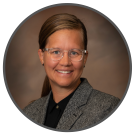
Heather Holmes
Associate Professor, University of Utah
Heather Holmes is an Associate Professor in the Department of Chemical Engineering at the University of Utah and has an interdisciplinary background that also includes mechanical engineering, environmental engineering, and atmospheric science. Her research group uses ground-based sensors, atmospheric models, and satellite remote sensing to investigate atmospheric physics, air pollution sources, transport and dispersion, and provide data for human health and public policy assessments.
Presentation Title: Confronting the uncertainties in simulating elevated wintertime air pollution concentrations in mountainous regions

Min Huang
Researcher, George Mason University
Dr. Huang has worked on multi-scale weather and atmospheric chemistry modeling, pollution source attribution, as well as developing long-term dust records using various observation products. Since 2016, Dr. Huang has been the Principal Investigator of a NASA SMAP-funded project, integrating satellite soil moisture data into weather, emission and air quality modeling.
Presentation Title: Incorporating satellite soil moisture data into dry deposition modeling: sensitivity to dry deposition parameterizations

Adele Igel
Assistant Professor, University of California, Davis
Adele Igel is an Assistant Professor with expertise in aerosol-cloud interactions, cloud microphysics, and modeling.
Presentation Title: Aerosol-Cloud-Longwave Radiation Interactions in Stratocumulus Clouds

Joseph Jakuta
Senior Air Quality Planner, District of Columbia Department of Energy an Environment
Joseph Jakuta is a Senior Air Quality Planner supporting the Air Quality Division at the District of Columbia Department of Energy and the Environment (DOEE). He previously worked at the Ozone Transport Commission (OTC)/Mid-Atlantic Northeastern Visibility Union (MANE-VU).
Mr. Jakuta has a Bachelor of Science in Computer Science from the University of Maryland at College Park and a Master of Environmental Management with a focus in Environmental Economics and Policy from the Nicholas School of the Environment at Duke University.
At DOEE he writes air quality regulations and State Implementation Plan (SIP) amendments. He also is the lead on analysis of criteria pollutant data and emissions inventory development. Additionally, he is staff support for the OTC Mobile Source Committee and participates in the work of the Medium-Heavy Duty ZEV MOU workgroup. He also maintains software for use by state air professionals, including python based ERTAC EGU projection tool and r4moves.
Outside of work he participates on the green advisory board for his city of residence Mount Rainier, Maryland, and volunteers with the Climate Parents of Prince George’s County.
Presentation Title: Use of linear regression techniques for demonstrating the exceptional impact of the Covid-19 health emergency on ozone air quality in the District of Columbia

Gill-Ran Jeong
Postdoctoral Fellow, George Mason University - NOAA Air Resources Laboratory
Gill-Ran Jeong is a postdoctoral research fellow at George Mason University and NOAA Air Resources Laboratory. Gill-Ran got a Ph.D. at Georgia Institute of Technology in 2007 and her research interests are finding the impacts of aerosols on weather/climate systems through their light absorption and hygroscopic capacities, which are determined by the physiochemical characteristics of aerosols and their atmospheric loading. She is currently working on developing an emissions processing system for NOAA aerosol and atmospheric composition (AAC) models in the Unified Forecast System (UFS) framework, performing simulations with UFS AAC models and evaluating results toward the improvement of emissions inputs.
Presentation Title: Updating and Evaluating Emissions in NOAA’s Global Ensemble Forecast System (GEFS)-Aerosols

Timothy Juliano
Project Scientist, National Center for Atmospheric Research (NCAR)
Timothy Juliano is a Project Scientist in the Research Applications Laboratory at the National Center for Atmospheric Research (NCAR). Timothy joined NCAR in 2019 as a Postdoctoral Fellow after earning his B.S. degree in Meteorology from Milersville University and his M.S. and Ph.D. degrees in Atmospheric Science from the University of Wyoming. His research focuses on numerical weather prediction, with interests spanning a variety of lower atmospheric problems including boundary layer dynamics and turbulence, wildland fire prediction, meteorological impacts on renewable energy, and aerosol-cloud interactions.
Presentation Title: Benefits of a Three-Dimensional Planetary Boundary Layer Parameterization for Horizontally Heterogeneous Flows
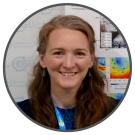
Emma Knowland
Research Scientist, USRA/GESTAR, NASA GMAO
Dr. Knowland is a lead scientist in the development of NASA GMAO’s atmospheric composition forecast system, GEOS-CF. She directs the transition from research & development to the production system and leads the evaluation of stratospheric composition in the GEOS-CF. Dr. Knowland’s research interests include both chemical and dynamical drivers of stratospheric and tropospheric composition. She is a member of the World Meteorological Organization (WMO) Global Air Quality Forecast and Information System (GAFIS) Steering Committee.
Presentation Title: Near real-time air quality forecasts using the NASA GEOS model

Mansa Krishna
Undergraduate Researcher, UCLA
Mansa Krishna is an undergraduate student pursuing a bachelors degree in Applied Mathematics with a specialization in Computing at UCLA. She is currently an undergraduate researcher with the Pablo Saide Research Group affiliated with UCLA and intends to pursue graduate studies in the Atmospheric and Oceanic Sciences. Her primary interests include Data Science, Mathematical Modelling and Numerical Methods.
Poster Presentation Title: Fire Plume Injection Heights Estimated from Doppler Weather Radar Observations

Rajesh Kumar
Project Scientist III, National Center for Atmospheric Research
Rajesh Kumar is a project scientist with the National Center for Atmospheric Research (NCAR), Boulder, Colorado, USA. His research focuses on air quality that is one of the most important socioeconomic and environmental concern around the world today. Air pollution is responsible for about 7 million premature deaths every year and loss of about 80-120 million ton of food. He synergistically integrates ground- and satellite-based air quality monitoring with atmospheric composition and modeling capabilities to address a number of air quality issues including transport and transformation of air pollution, the relative importance of local and foreign emissions, deterministic and probabilistic air quality predictions, aerosol-climate interactions, heterogeneous atmospheric chemistry, chemistry-climate interactions, projection of future air quality, and impact of air quality for public health and food security.
Poster Presentation Title: Development of a chemical data assimilation system for air quality reanalysis over the CONUS
William Lassman
Postdoc, Lawrence Livermore National Lab
MS and PhD at Colorado State University modelling wildfire smoke and on agricultural emissions and dispersion. Research interest include wildfires, air quality, climate change and sustainability, modelling and numerical weather prediction, and LES.
Poster Presentation Title: Connecting fire behavior to air quality: a case study of the 2020 Northern California wildfire season

Zhao Li
Senior Scientist, NASA-GSFC GMAO
Zhao Li graduated from University of Alaska, Fairbanks in 2007 and has been working in NASA-GSFC GMAO on Seasonal forecast ever since.
Poster Presentation Title: Evaluation of Aerosol effects in GEOS5-S2S-V2 Seasonal-Subseasonal hindcast during the Dust season and Biomass burning seasons

Yang Liu
Professor, Emory University
Dr. Liu’s research interests include satellite aerosol retrieval and product design, the application of satellite data in public health research, the potential impacts of global climate change on public health, GIS and spatial statistics. Over the past 13 years, He has led multiple projects funded by NASA, CDC, NIH, EPA, HEI, and WHO to apply satellite data in air quality modeling and study the impact of climate change on air quality and human health using remote sensing and model simulations, and health impact of climate change related to extreme heat, wildfires, and ambient air pollution. He was an ORISE faculty fellow at the National Center for Environmental Health at the US CDC and a Co-investigator of USEPA's Southeastern Center for Air Pollution and Epidemiology. He is a science team member of the NASA EVI-3 MAIA and Terra MISR missions, and a PI member of the NASA Air Quality Applied Science Team (AQAST) and Health and Air Quality Applied Science Team (HAQAST).
Presentation Title: Application of geostationary satellite and high-resolution meteorology data in estimating hourly PM2.5 levels in California

Zhen Liu
Scientist, California Air Resources Board
Zhen Liu is a scientist specialized in computational modeling and analysis of atmospheric chemistry and air quality at California Air Resources Board. He holds a PhD in Atmospheric Sciences from Georgia Tech. Prior to joining CARB, he had worked as a Postdoc at Sandia National Labs and a senior consultant at Ramboll Corporation.
Presentation Title: Reduced order modeling and source attribution with CMAQ-DDM-3D in California

Zheng Lu
Associate Research Scientist, Texas A&M University
Dr. Lu received his B.S. in Atmospheric Science from Nanjing University in 2007 and Ph.D. degree from Georgia Institute of Technology. Zheng Lu’s research focuses on simulating the formation and transport of aerosols, including anthropogenic nitrate and biomass burning aerosols, as well their impacts on cloud and climate using different models including E3SM, CESM2, and WRF-Chem.
Presentation Title: Examining the Impacts of an Interactive Fire Plume-Rise Model in E3SM on Aerosol Indirect Effects

Melissa Maestas
Air Quality Specialist, South Coast Air Quality Management District
Melissa Maestas is an Air Quality Specialist in the Air Quality Assessment Group within the Planning, Rule Development & Area Sources Division at the South Coast Air Quality Management District. Areas of expertise include exceptional events demonstration, analysis of pollutant concentration data, and forecasting air quality. Melissa earned her PhD and master’s degrees in Atmospheric Sciences from the University of Utah. Melissa's bachelor’s degree is in physics with a minor in economics.
Presentation Title: PM2.5 Impacts of the Record- Setting 2020 Wildfire Season in Southern California: The Bobcat and El Dorado Fires

Paul Makar
Senior Research Scientist, Environment and Climate Change Canada
Paul Makar is a senior scientist with the Air Quality Modelling and Integration Section of Environment Canada. His research interests include all aspects of air-quality modelling, Dr. Makar is one of the builders of Canada’s GEM-MACH air-quality model. He leads ECCC’s Oil Sands Modelling team, and represents Canada on the World Meteorological Organization’s Science Advisory Group on Modelling Applications. He has published in many different journals, including Nature Communications, Atmospheric Chemistry and Physics, Journal of Geophysical Research-Atmospheres, Atmospheric Environment and Geoscientific Model Development, with over 4000 citations to his work. Specific atmospheric process areas of interest to Dr. Makar include: direct and indirect effect feedbacks between air pollution and weather, impacts of climate change on air pollution, interactions between biosphere and atmosphere, human-activity-induced turbulence and its effects on air quality, gas and particle deposition, numerical integration methods, gas-phase chemical mechanisms and inorganic particle thermodynamics.
Presentation Title: The potential impact of vehicle-induced turbulence on regional air pollution

Carl Malings
NASA Postdoctoral Program Fellow
Carl Malings has been a NASA Postdoctoral Program Fellow at the Goddard Space Flight Center since April 2020. His research focuses on integrating air quality data from numerous sources, including models, satellites, and low-cost air sensors, to develop more comprehensive assessments of air quality. He has prior research experience in low-cost sensors for air quality monitoring, conducted at Carnegie Mellon University and the French National Research Agency. He received his PhD in civil engineering infrastructure systems monitoring optimization from Carnegie Mellon University in 2017.
Presentation Title: Sub-city-scale air quality forecasts combining models, satellites, and surface measures

Jeff McQueen
Meteorologist, NOAA/NWS/NCEP/EMC
Jeff McQueen is the Air Quality and Dispersion Modeling Team Leader at NOAA's Environmental Modeling Center at NWS/NCEP. He began working on Numerical Weather Prediction in the 1980s at Colorado State University and then NASA's Goddard Space Flight Center before performing research on atmospheric modeling for dispersion and boundary layer applications at NOAA's Air Resources Laboratory. Jeff's primary interest these days is on improving the operational NWS regional air quality offline GFS-CMAQ, online GEFS-aerosols and transitioning these capabilities to the Unified Forecast System (UFS) by supporting the research community to provide potential operational capabilities.
Presentation Title: Progress and Plans for Advances in Air Quality and Aerosol Modeling in UFS

Arthur Mizzi
Senior Research Fellow, USRA/NASA
Dr. Arthur P. Mizzi is a Senior Research Fellow at the Universities Space Research Association (USRA) within the NASA Ames Research Center/Earth Science Division. He is the developer of WRF-Chem/DART – a regional, ensemble Kalman filter, chemical weather forecast/assimilation system that integrates the WRF model with online chemistry (WRF-Chem) into the Data Assimilation Research Testbed (DART). WRF-Chem/DART is a quasi-realtime system that assimilates all meteorological observations and many atmospheric constituent/aerosol in situ and satellite retrievals. WRF-Chem/DART also: (i) uses the ‘state augmentation method’ for emissions adjustment; (ii) assimilates retrievals as ‘raw ‘or ‘compact phase space retrievals’ (CPSRs); and (ii) includes state-space localization. WRF-Chem/DART is used throughout the United States, China, Mexico, and Europe. Dr. Mizzi is recognized internationally as an expert in regional chemical data assimilation. At NASA Ames, he is expanding WRF-Chem/DART to include assimilation of OMI, TROPOMI, TEMPO, and MAIA retrievals.
Presentation Title: Assimilation of multiple satellite retrievals and emissions adjustment to improve high resolution air quality forecasting

Hande Öcba
PhD Student, ITU Eurasia Institute of Earth Sciences
Ms. Hande Öçba is currently a PhD student at Istanbul Technical University, Eurasia Institute of Earth Sciences. She received a bachelor’s degree in electronical engineering and a master’s degree in energy engineering from Karlsruhe Institute of Technology. She is interested in the application of machine learning concepts in earth sciences, air quality and ecosystem restoration.
Presentation Title: Forecasting PM10 Using Deep Learning Methods

Valerio Panzica La Manna
Program Manager, imec
Dr. Valerio Panzica La Manna is a Program Manager at imec, the Netherlands. He is leading multi-disciplinary teams of researchers and engineers advancing the research in sensor technology, wireless sensor networks, and algorithms, to enable fine-grained, precise, and cost-effective air quality monitoring in smart cities and buildings. He is managing a portfolio of projects with industry and public institutions with different deployments, in Smart City, Smart Home, and Smart Buildings, in the Netherlands and in Belgium, where the new technology can be tested, demonstrated, and applied in real life.
Before joining imec, he worked at the MIT Media Lab, USA, Politecnico di Milano, Italy, and IBM R&D Labs, Israel. He holds a Ph.D. in Software Engineering and a MSc in Computer Science and Engineering from Politecnico di Milano, Italy, and a MSc in Computer Science from the University of Illinois, Chicago, USA.
Presentation Title: Combining mobile air quality sensor data and machine learning for more fine-grained air quality assessments in urban areas
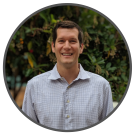
David Peterson
Meteorologist, U.S. Naval Research Laboratory
Dr. Dave Peterson is a meteorologist at the US Naval Research Laboratory in Monterey, CA. He has broad scientific interests in both meteorology and satellite remote sensing. Dave currently supports the US Navy’s global aerosol modeling efforts, with a focus on extreme wildfires and smoke transport. He is a leading expert on thunderstorms caused by intense wildfires (pyrocumulonimbus), and the ensuing impact on stratospheric composition. Dave also serves as an interface between operational meteorologists, atmospheric chemistry scientists, and modelers, especially during large field experiments.
Presentation Title: Australia’s Black Summer Pyrocumulonimbus Super Outbreak Reveals Potential for Increasingly Extreme Stratospheric Smoke Events

Gabriele Pfister
Scientist, National Center for Atmospheric Research
Gabriele (Gabi) Pfister integrates modeling and measurements in air quality research. She both develops and uses models of global and regional chemical transport as well as satellite retrievals of atmospheric composition and observations from field campaigns. Her work focuses on the drivers of ozone pollution, the links between local, regional and global pollution and the impacts of extreme events such as wildfires.
Poster Presentation Title: MUlti-Scale Infrastructure for Chemistry and Aerosols (MUSICA)

Jonathan Pleim
Research Physical Scientist, US EPA
Jonathan Pleim's core expertise is in development of atmospheric models for simulation of meteorology and air quality. He has been involved with the development meteorology models such as MM4, MM5, WRF and now MPAS; and air quality (AQ) models such as ADOM, RADM, and CMAQ. Jonathan has developed an atmospheric boundary layer model called the Asymmetric Convective Model version 2 (ACM2) and the land-surface model called the PX-LSM which are both widely used in WRF and in CMAQ. He has also developed dry deposition and bi-directional surface flux models for CMAQ and been involved in many other physics and dynamics components of these models. As Chief of the Atmospheric Model Development Branch Jonathan oversees the continued development of CMAQ and the WRF-CMAQ coupled meteorology and AQ modeling system and the new development of the Next Generation AQ model.
Presentation Title: Development and evaluation of the coupled MPAS-CMAQ model system

Julián Quimbayo-Duarte
Assistant Researcher, Goethe University Frankfurt
Dr Julián Quimbayo Duarte received his PhD in atmospheric sciences from the Grenoble Alpes University (France) in 2019. Currently, he is a member of the boundary layer meteorology group at Goethe University Frankfurt (Germany). His research focuses on process analysis by implementing large-eddy simulations to explore the atmospheric dynamics over complex terrain.
Session Title: Complex Terrain and Coastal Zone Meteorology

Behrooz Roozitalab
Graduate Research Assistant, University of Iowa
Behrooz received his MSc degree in Environmental Engineering from University of Tehran, Iran. He is currently a PhD candidate in Chemical and Biochemical Engineering at University of Iowa, US. His research interests lie in the links between atmospheric chemistry, air quality, and health impacts and how these links can be understood to propose management plans for emission controls and air quality prediction. He primarily uses global and regional chemical transport models and satellite retrievals to address the air quality issues. He has been involved in Lake Michigan Ozone Study (LMOS) to understand the ozone formation and transport around Lake Michigan. Behrooz has also studied the air pollution, in terms of particles and ozone, over northern India . He is also the 2020 Ralph Cicerone fellow at National Center for Atmospheric Research (NCAR) and uses a new multiscale global model (MUSICA) to further study the air quality over India.
Poster Presentation Title: COVID-19 lockdown and chemical characteristics of ozone formation in India

Chayan Roychoudhury
Graduate Research Assistant, The University of Arizona
A PhD student in Atmospheric Sciences at the University of Arizona. Working on modeling the atmospheric composition in the High-mountain Asia region and its association with snow cover.
Poster Presentation Title: Exploring the association of meteorology and atmospheric composition to snow cover changes: A case study over High-Mountain Asia and Central Andes

Abdul Samad
Research Scientist, University of Stuttgart
Abdul Samad is working as a PhD student at the Air Quality Control department of the University of Stuttgart in Germany. He has completed the BMBF project [UC]² "Urban Climate Under Change", in which he carried out extensive measurements and studies of the air quality and meteorological parameters of the urban climate in Stuttgart. Currently he is working on the second phase of this project, which mainly focuses on urban climate modelling. Abdul Samad did his Bachelors in Chemical Engineering from Pakistan and studied the Masters in WASTE (Air Quality Control, Solid Waste and Waste Water Process Engineering) at the University of Stuttgart. The research work done by Abdul Samad has been presented in several conferences and symposiums.
Presentation Title: Application of urban climate model PALM-4U to investigate pollutant distribution in Stuttgart

Ryan Schmedding
Graduate Student Researcher, McGill University
Ryan Schmedding is a 2nd Year PhD student in the Department of Atmospheric and Oceanic Sciences at McGill University. His research is focused on understanding the physicochemical properties of interfaces that occur at the phase boundary between an aerosol and the surrounding gas, or between 2 or more condensed phases within an aerosol. He is also interested in understanding how these properties may influence the interactions between aerosols, clouds, and the climate system. Before coming to McGill, Ryan earned a Master of Science in Environmental Science and Engineering and a Bachelor of Science in Public Health with a major in Environmental Health Science from the Gillings School of Public Health at the University of North Carolina at Chapel Hill.
Presentation Title: Just Scratching the Surface: Improving the Representation of Aerosol Size Dependent Properties in a Thermodynamic Mixing Model

Lauren Schmeisser
Postdoctoral Researcher, Cooperative Institute for Research in Environmental Sciences, CU Boulder/NOAA
Lauren Schmeisser is a postdoctoral researcher at the Cooperative Institute for Research in Environmental Sciences and works at NOAA ESRL in the Global Radiation and Aerosols Division in Boulder, CO. Her research focus is on using long-term in-situ surface aerosol measurements to understand spatio-temporal variability of aerosols, to assess extreme air quality events, and to evaluate global aerosol models. Lauren earned her PhD in Atmospheric Sciences from the University of Washington in Seattle; she also holds a MSc in Earth Sciences and a BS/MS in Environmental Engineering from the University of Colorado at Boulder.
Presentation Title: Using In-situ Surface Measurements of Aerosol Optical Properties to Evaluate Model Simulations - the AeroCom INSITU Experiment

Jordan Schnell
Research Associate, CIRES/NOAA GSL
Jordan completed his Ph.D. in Earth System Science in 2016 with a focus on extreme pollution episodes and their characterization in global chemistry models. He completed postdoctoral research at Princeton University and Northwestern University, transitioning to regional chemical models and using them to explore mitigation scenarios. He now works at CIRES/NOAA GSL as a developer of the WRF-Chem model and RAP-Chem experimental forecast model.
Poster Presentation Title: Experimental air quality forecasting with the Rapid-Refresh model coupled to chemistry (RAP-Chem)

Obin Sturm
Graduate Student, TU Delft, TNO
Obin Sturm is a current master’s student in the Department of Applied Mathematics at Delft University of Technology and is involved in projects at the Netherlands Organisation for Applied Scientific Research (TNO) and the Air Quality Research Center at University of California, Davis. He graduated from UC Davis with a bachelor’s degree in chemical engineering in 2017, and was the project manager and programmer in 2018 and 2019 for the Index of Chamber Atmospheric Research in the United States (ICARUS), led by the Nguyen Lab at UC Davis. Obin’s first work experience in the field of air quality was in undergrad, handling IMPROVE filter samples as a laboratory assistant at Crocker Nuclear Laboratory.
Presentation Title: Reduced order modeling of organic aerosol tracers in LOTOS-EUROS using machine learning

Youhua Tang
Senior Research Scientist, NOAA Air Resources Laboratory
Youhua Tang is senior research scientist in George Mason University and NOAA Air Resources Laboratory. His work focuses on air quality modeling, its associated data/process
analysis and chemical data assimilation. He is one of major scientists to support the NOAA National Air Quality Forecasting Capability (NAQFC) system. He got his Ph.D. degree in Institute of Atmospheric Physics, Chinese Academy of Sciences in 1999. Before joining the NAQFC project in 2006, he worked in NOAA Aeronomy Laboratory for one year and University of Iowa for 6 years.
Presentation Title: An Improved National Air Quality Forecasting Capability Using the NOAA Global Forecast System. Part II: Science Advancements and Evaluations

Laura Thapa
Graduate Student, University of California, Los Angeles
Laura Thapa is a rising third year PhD Student in the Department of Atmospheric and Oceanic Sciences (AOS) at UCLA in Dr. Pablo Saide's research group. Her research focuses on improving representations of wildfire smoke in air quality models, including plume rise model evaluation and emissions forecasting using machine learning. She is also interested in aerosol chemistry and physics in wildfire-induced thunderstorms, and has participated in research in this topic as a Naval Research Laboratory summer intern with Dr. David Peterson. Laura is a NASA FINESST Fellow and was co-president of Chi Epsilon Pi (AOS department social organization/student government) in the 2020-2021 school year.
Presentation Title: Evaluating modeled smoke plume heights against airborne lidar observations for multiple fires during FIREX-AQ

Daniel Tong
Associate Professor, George Mason University
Daniel Tong is an associate professor and director of Satellite and Earth System Studies Program at George Mason University. Daniel Tong obtained his PhD in Atmospheric Sciences from North Carolina State University and received postdoctoral training at Princeton University. Previously, he served as the Emission Scientist of the US National Air Quality Forecast Capability (NAQFC) program operated by National Oceanic and Atmospheric Administration. Daniel is interested in studying emissions of anthropogenic and natural sources, and their effects on air quality, human health, and climate.
Presentation Title: Ensemble PM2.5 Forecasting During the 2018 Camp Wildfire

Francis Turney
Graduate Student Researcher, University of California, Los Angeles
As a local Angelino and University of California, Los Angeles Graduate Student, Francis Turney has been studying and working in Los Angeles his whole life. His research currently focuses on forecasting wildfire spread and subsequent changes to air quality predictions. Although mainly utilizing the coupled atmospheric-fire-spread model WRF-Fire for forecasting, he also studies advancements in observation/model comparisons and was part of the forecasting team for 2019 FIREX-AQ data collection campaign.
Presentation Title: Assessment of WRF-Fire’s Forecasting Skill on Large Wildfires

Jian Wang
Professor, Washington University
Dr. Wang received his B.S. in physical chemistry from University of Science and Technology of China (USTC) in 1996 and Ph.D. in chemical engineering from California Institute of Technology in 2003. His research interests include aerosol instrumentation, formation and evolution of aerosol particles in the atmosphere, and the influences of aerosols on clouds, climate, and air quality. He was a Goldhaber Distinguished Fellow at Brookhaven National Laboratory from 2002 to 2005 and received the Kenneth T. Whitby Award from American Association for Aerosol Research in 2013. Currently, Dr. Wang is the director of the Center for Aerosol Science and Engineering (CASE) and Professor of Energy, Environmental and Chemical Engineering at Washington University in St. Louis.
Presentation Title: New particle formation over the oceans: Results from recent field campaigns

Jun Wang
Professor, University of Iowa
Jun Wang is James E. Ashton Professor in the College of Engineering at the University of Iowa. He also serves as assistant director of the University of Iowa Technology Institute and directs the Atmospheric and Environmental Research Lab. His research focuses on the integration of satellite remote sensing, Earth system models, and Internet of Things to study air quality, wildfires, land-air interaction, weather, and climate. He has supervised ~20 undergraduate research assistants and ~20 graduate students. He received a B.S. in atmospheric dynamics from Nanjing University of Information Science and Technology in 1996, an M.S. in meso-scale meteorology from the Institute of Atmospheric Physics, Chinese Academy of Sciences in 1999, and a Ph.D. in atmospheric sciences from the University of Alabama –Huntsville. He did his postdoc at Harvard University under the support of NOAA Climate and Global Change postdoctoral fellowship in 2005-2007 before he joined faculty in University of Nebraska. He moved to the University of Iowa in 2016. More about his research team’s work can be found at http://arroma.uiowa.edu.
Presentation Title: Lighting the dark: first retrieval of fire combustion efficiency from space for air quality applications

Joost Wesseling
Senior Scientist, National Institute for Public Health and the Environment
Joost Wesseling has co-developed the present Dutch air quality monitoring system in the Netherlands. In recent years, he has been working on testing air quality sensors and developing measurement strategies for these sensors. The enrichment of real-time maps of air quality with sensor data using data fusion and assimilation techniques is also being investigated. Presently, he is involved in coordinating the activities of the European FAIRMODE project on benchmarking of networks of low-cost air quality sensors.
Presentation Title: Benchmark on methodologies to integrate low-cost sensor networks with official measurements and modelled data: first results

Kai Wilmot
Graduate Student, University of Utah
Kai Wilmot attended the University of Wisconsin-Madison for undergraduate studies in environmental science and a M.S. in environment and resources. During his M.S. work, Kai considered interactions between volcanic aerosols and the quasi-biennial oscillation, with applications to light use efficiency and crop growth. Now, Kai is working toward a Ph.D. at the University of Utah, where he is using a combined observations and modeling approach to investigate the evolving role of wildfires in Western US air quality. Kai is fortunate to be a member of both the Hallar Aerosol Research Team and Land-Atmosphere Interactions Research group at the University of Utah, where he is co-advised by Dr. Gannet Hallar and Dr. John Lin.
Poster Presentation Title: Quantifying the impact of wildfires on air quality in Western US urban centers

Junhua Zhang
Physical Scientist, Environment and Climate Change Canada
Dr. Junhua Zhang is a physical scientist working in the Air Quality Modelling and Integration Section, Air Quality Research Division, Environment and Climate Change Canada. One of his main responsibilities is to obtain and process emissions to support regional/global air quality modeling.
Presentation Title: Examination and Processing of MODIS Leaf Area Index (LAI) Product for Air Quality Modelling

Yang Zhang
Professor, Northeastern University
Dr. Zhang specializes in atmospheric and environmental research at the interface of Earth system sciences that crosses traditional disciplinary boundaries including energy, air, water, land, ocean, and human health. Over the years, Dr. Zhang has contributed to the development, improvement, application, and evaluation of major 3-D air quality, climate, and Earth system models on urban, regional, and global scales such as STEM III, GChM, MIRAGE, SCICHEM, CMAQ, CMAQ-MADRID, CAMx, MM5, WRF, and mesoscale and global-through-urban WRF/Chem, WRF/Chem-MADRID, WRF-CAM5, WRF/Chem-ROMS, and CESM/CAM5. Her group has also worked on Street-in-Grid models such as SinG, hydrological models such as WaSSI, and health modeling tools such as BenMAP-CE.
Dr. Zhang has devoted sustained efforts to solve some of the most pressing and challenging environment- and energy-related scientific and technical issues related to air and water pollution, acid deposition, global warming and other adverse climate change, as well as associated adverse human health and ecosystem impacts. Dr. Zhang’s research advances the scientific understanding of major atmospheric and environmental issues by developing and utilizing numerical models and analysis tools at various scales (from local to global) to address relevant science and policy questions pertaining to controlling air pollution, mitigating adverse climate change and human health, and minimizing environmental damages in the entire Earth system.
Presentation Title: Examination of Chemistry-Aerosol Combinations in the US Next Generation of the National Air Quality Forecast Capability

Zhan Zhao
Air Pollution Specialist, California Air Resources Board
Dr. Zhan Zhao is an Air Pollution Specialist at the Regional Air Quality Modeling Section of California Air Resources Board (CARB). She leads the meteorological aspects of the climate change projects, as well as conducts in-house Weather Research and Forecasting (WRF) model simulations to support the development of the State Implementation Plans (SIPs) for California.
Presentation Description: Assessment of future wintertime meteorology over California using dynamical downscaling method with a bias correction technique

Shupeng Zhu
Senior Scientist, Advanced Power and Energy Program, University of California, Irvine
Dr. Zhu is a senior scientist at APEP and has more than 9 years of experience leading and conducting researches in atmospheric modeling including meteorology, air quality, and emission projections. His research activities involve the optimization of air quality model performance based on up to date knowledge in atmospheric modeling, design the emission inventory based on technology pathways and mitigation policies, modeling the air quality-related social and economic impact. He has an M.S. in Urban and Environmental Planning from École Centrale de Nantes and a Ph.D. in Environmental Sciences from the University of Paris-Est in France.
Presentation Title: Modeling reactive ammonia uptake by secondary organic aerosol in a changing climate: a WRF-CMAQ evaluation
